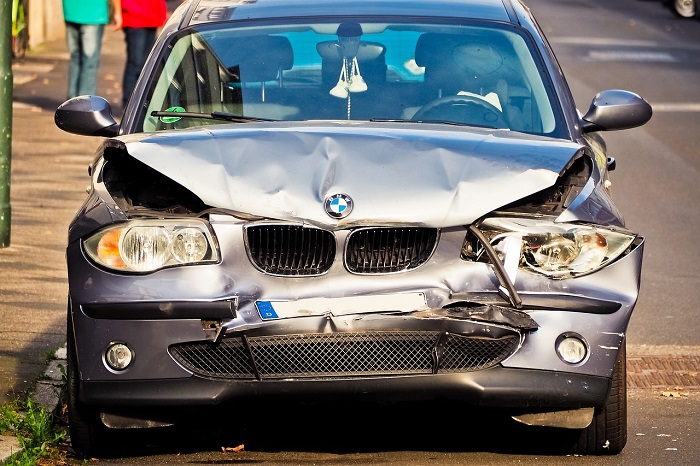Distracted driving has emerged as a critical safety concern on roads worldwide, posing significant risks to drivers, passengers, and pedestrians alike. This widespread issue encompasses a range of behaviors that divert attention from the primary task of operating a vehicle safely.
Technological advancements have brought numerous benefits to society. However, they have also introduced a new impulse for drivers to engage with their devices while behind the wheel. The consequences of such distractions can be severe, often resulting in accidents, injuries, and fatalities.
Research consistently demonstrates that even brief distractions can greatly impact a driver’s ability to react to sudden changes in road conditions. The issue extends beyond mobile phone use, including activities such as eating, adjusting vehicle controls, or interacting with passengers.
It is time for us to all admit how severe this problem is and pledge to keep our focus on the road ahead. We hope that reading this article will help you think more broadly about human safety.
Distraction Or Death Invitation?
Vehicular collisions occur every five seconds, with a life lost every 12 minutes on average. These incidents often happen during work hours, leaving employers struggling with injuries and financial burdens. At the core of this crisis lies the common issue of distracted driving. In 2022, this preventable problem took away 3,308 lives.
According to Springs Law Group, the concept of distraction extends beyond texting, encompassing a range of attention-diverting activities. Distracted driving manifests in three primary forms: visual, manual, and cognitive.
Visual Distraction
The National Highway Traffic Safety Administration highlights the dangers of visual distraction while driving. Taking one’s eyes off the road for just five seconds at 55 mph is equivalent to driving the length of a football field blindfolded. Common visual distractions include checking mobile devices, reading billboards, or observing events outside the vehicle.
This brief lapse in visual attention can have catastrophic consequences, leading to rear-end collisions, lane departures, or failure to notice pedestrians and cyclists. Studies indicate that visually distracted drivers experience a significant reduction in their ability to detect and react to sudden changes in traffic conditions.
Manual Distraction
Manual distractions in driving involve activities that require drivers to remove one or both hands from the steering wheel, compromising vehicle control. Common examples include texting, eating, drinking, or adjusting in-car controls while the vehicle is in motion.
These actions significantly impair a driver’s ability to respond quickly to unexpected road emergencies. Such diversions can have severe effects, from small-scale collisions to catastrophic ones that cause major injuries or fatalities. Manual distractions often coincide with visual and cognitive distractions, further increasing the risks.
For instance, reaching for a fallen object combines manual distraction with visual diversion, creating a potentially dangerous scenario. Law enforcement agencies report that manual distractions contribute to a substantial portion of distracted driving incidents annually. The outcomes of these accidents extend beyond immediate physical harm, often resulting in long-term psychological trauma and financial burdens for all involved parties.
Cognitive Distraction
Cognitive distraction in driving occurs when a driver’s mind is not fully focused on the task of operating the vehicle safely. This form of distraction can manifest through various activities, such as engaging in deep conversations, daydreaming, or mental preoccupation with personal or work-related issues. Unlike visual or manual distractions, cognitive distractions are often less apparent but equally dangerous.
Research conducted by the AAA Foundation for Traffic Safety indicates that cognitive distractions can persist for up to 27 seconds after the distracting activity ends. This lingering effect significantly impairs a driver’s ability to process and respond to crucial information from their surroundings. Studies show that cognitive distractions contribute to a substantial number of rear-end collisions and intersection-related crashes annually.
What’s even more shocking is the possibility that these numbers are significantly underreported. Distracted drivers have dulled reactions and poor judgment, making it difficult for them to handle difficult driving conditions. On wheels, it is a formula for disaster.
A Centre Point Of Danger
The statistics surrounding distracted driving present a depressing reality, with up to 30% of global crashes happening due to distractions. Around 4,000 daily collisions are attributed to this dangerous behavior. Colorado Springs emerges as a significant area of concern within this broader context of road safety. It is shocking how common this problem is that a startling 91% of Colorado drivers admit to engaging in distracted driving.
This widespread disregard for safety has led to devastating consequences on Colorado’s roadways, particularly in urban areas like Colorado Springs. In 2022, distracted drivers were involved in over 15,000 crashes across Colorado, resulting in at least 72 fatalities.
These figures underscore the urgent need for increased awareness and preventive measures. Perhaps most alarming is the normalization of distracted driving among Colorado residents.
Similar to putting on a seatbelt, many people now consider checking their phones or multitasking while driving to be common habits. This shift in attitude threatens to undermine years of progress in road safety initiatives, placing all road users at heightened risk. Urban environments like Colorado Springs require heightened attentiveness due to complex traffic patterns and increased pedestrian activity.
Even cautious drivers may fall victim to the negligence of distracted individuals on the road. In cases where injuries result from a distracted driver’s negligence, seeking legal counsel becomes crucial.
A Colorado Springs auto accident attorney can provide valuable guidance and representation for those affected. Legal action serves not only to seek compensation for victims but also to raise awareness about the serious consequences of distracted driving.
Frequently Asked Questions (FAQs)
How does texting while driving impact road safety?
Texting while driving is particularly dangerous because it combines all three types of distractions: visual, manual, and cognitive. This significantly increases the risk of a collision. According to studies, texting while driving can make a driver 23 times more likely to be involved in a crash. This makes it one of the most hazardous forms of distracted driving.
What are the legal consequences of distracted driving?
The legal consequences of distracted driving vary by jurisdiction. However, it can include fines, points on your driver’s license, and even criminal charges if the distraction leads to a serious accident or fatality. Many places have implemented strict laws against using handheld devices while driving, with penalties increasing for repeat offenders.
How do distractions impact my driving ability?
Distractions significantly impair driving ability by diverting your attention, reducing reaction time, and increasing the likelihood of making mistakes. When distracted, you may miss important signals, fail to notice changes in traffic, and react slower to hazards. This can lead to accidents, injuries, and even fatalities, making distracted driving extremely dangerous.
Combating the distracted driving epidemic begins with a commitment to undivided attention on the road. Pre-journey preparations, such as setting up navigation and pre-programming radio stations, can significantly reduce distractions while driving. Creating a focused environment in the vehicle is crucial for safe driving practices.
Drivers can utilize technology to silence notifications, while passengers can alert drivers to potential distractions and assist with tasks. Parents also play a vital role in shaping future driver’s behaviors by establishing clear guidelines and modeling attentive driving habits. Each journey presents an opportunity to reinforce safe practices.










Got a Questions?
Find us on Socials or Contact us and we’ll get back to you as soon as possible.